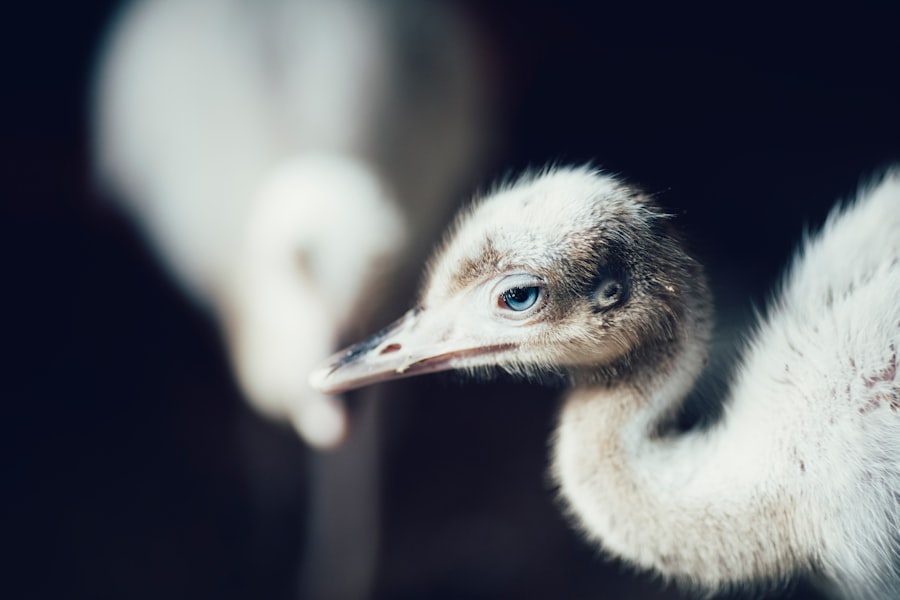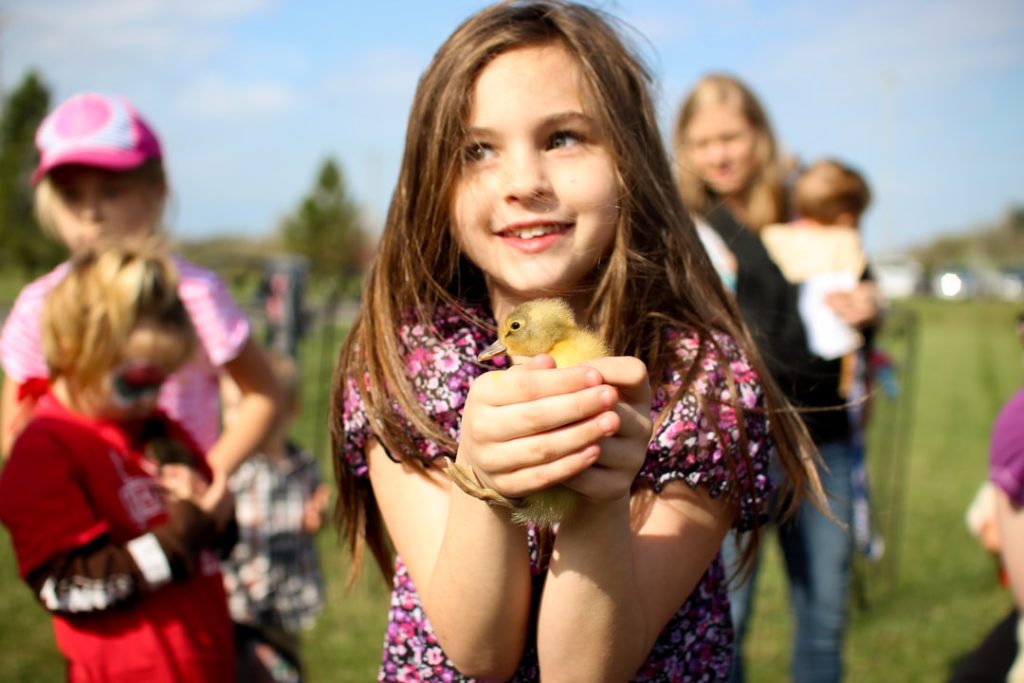Maintaining chicks in an incubator is essential for their initial development and survival. The controlled environment of an incubator provides optimal conditions for egg hatching and chick development during their first few days of life. Temperature, humidity, and ventilation are precisely regulated to simulate the natural conditions provided by a mother hen.
This environment ensures that chicks have an ideal start in life and are less prone to stress, disease, and other health issues. Incubators also allow for close monitoring of chick progress. It is easier to observe each chick’s development and address any problems that may occur, such as pipped eggs or chicks struggling to hatch.
This level of supervision is critical for maximizing survival rates. Additionally, keeping chicks in the incubator enables them to fully absorb their yolk sac, which provides essential nutrients and energy during their first few days. This process is crucial for their overall health and well-being.
In summary, incubator use is vital for chick early development and survival. The controlled environment and close monitoring offered by incubators are fundamental in ensuring chicks have the best possible start in life and reduced susceptibility to health problems.
Table of Contents
- 1 Ideal Time Frame for Keeping Chicks in the Incubator
- 2 Signs that Chicks are Ready to Leave the Incubator
- 3 Potential Risks of Keeping Chicks in the Incubator for Too Long
- 4 Steps to Take Before Removing Chicks from the Incubator
- 5 Transitioning Chicks from Incubator to Brooder
- 6 Monitoring and Caring for Chicks After Leaving the Incubator
- 7 FAQs
- 7.1 What is an incubator?
- 7.2 How long should chickens stay in the incubator after hatching?
- 7.3 Why is it important to keep chickens in the incubator after hatching?
- 7.4 What are the ideal conditions for chickens in the incubator after hatching?
- 7.5 What should be provided for chickens in the incubator after hatching?
Key Takeaways
- Keeping chicks in the incubator is important for their initial development and protection from external elements.
- The ideal time frame for keeping chicks in the incubator is typically 21 days, but can vary depending on the breed of the chicks.
- Signs that chicks are ready to leave the incubator include dry and fluffy feathers, active movement, and the ability to maintain body temperature.
- Potential risks of keeping chicks in the incubator for too long include overcrowding, increased risk of infection, and stunted growth.
- Before removing chicks from the incubator, it is important to ensure that the brooder is set up with proper heating, bedding, and access to food and water.
- Transitioning chicks from the incubator to the brooder should be done gradually to allow them to acclimate to the new environment.
- After leaving the incubator, it is important to monitor and care for the chicks by providing proper nutrition, warmth, and protection from predators.
Ideal Time Frame for Keeping Chicks in the Incubator
Why 24-48 Hours is the Sweet Spot
The ideal time frame for keeping chicks in the incubator is approximately 24 to 48 hours after they have hatched. During this time, the chicks will have fully absorbed their yolk sac and will be ready to leave the incubator. This period allows the chicks to adjust to their new environment and gain strength before being moved to a brooder.
The Importance of Drying and Fluffing
It also gives them time to dry off completely and fluff up, which is essential for regulating their body temperature outside of the warm, controlled environment of the incubator. Keeping chicks in the incubator for too long can lead to overcrowding, which can cause stress and potential health issues.
Avoiding Common Mistakes
On the other hand, removing them too early can result in underdeveloped chicks that are not yet ready to thrive outside of the controlled environment of the incubator. Therefore, it is important to closely monitor the chicks and ensure that they are ready to leave the incubator before being moved to a brooder.
Conclusion
In conclusion, the ideal time frame for keeping chicks in the incubator is approximately 24 to 48 hours after they have hatched. This period allows the chicks to fully absorb their yolk sac, adjust to their new environment, and gain strength before being moved to a brooder.
Signs that Chicks are Ready to Leave the Incubator
There are several signs that indicate when chicks are ready to leave the incubator and be moved to a brooder. One of the most important signs is that the chicks have fully absorbed their yolk sac. This can be observed by checking for a smooth, flat abdomen on each chick.
If there is still a noticeable bulge, it means that the chick has not fully absorbed its yolk sac and should remain in the incubator until it has done so. Another sign that chicks are ready to leave the incubator is that they are dry and fluffy. When chicks first hatch, they are wet and bedraggled.
However, as they dry off, their down feathers fluff up, which is essential for regulating their body temperature outside of the warm, controlled environment of the incubator. Additionally, active and alert behavior is a good indicator that chicks are ready to leave the incubator. Chicks that are moving around, pecking at food, and chirping are showing signs of strength and vitality, which means they are ready to be moved to a brooder.
In summary, signs that chicks are ready to leave the incubator include fully absorbed yolk sacs, dry and fluffy down feathers, and active and alert behavior. It is important to closely monitor these signs before moving the chicks to a brooder.
Potential Risks of Keeping Chicks in the Incubator for Too Long
Keeping chicks in the incubator for too long can pose several potential risks to their health and well-being. One of the main risks is overcrowding, which can lead to stress and potential health issues such as dehydration and suffocation. As the chicks grow and become more active, they require more space to move around and stretch their wings.
Keeping them in a crowded environment for an extended period can lead to increased stress levels and decreased overall health. Furthermore, keeping chicks in the incubator for too long can delay their transition to a brooder, where they can access food, water, and space to move around freely. This delay can result in underdeveloped chicks that are not yet ready to thrive outside of the controlled environment of the incubator.
Additionally, prolonged exposure to high humidity levels in the incubator can increase the risk of bacterial growth and disease, which can negatively impact the health of the chicks. In conclusion, potential risks of keeping chicks in the incubator for too long include overcrowding, delayed transition to a brooder, and increased risk of bacterial growth and disease. It is important to closely monitor the chicks and ensure that they are ready to leave the incubator before being moved to a brooder.
Steps to Take Before Removing Chicks from the Incubator
Before removing chicks from the incubator, there are several important steps that should be taken to ensure a smooth transition to a brooder. Firstly, it is essential to prepare a clean and warm brooder with fresh bedding, heat source, food, and water. The brooder should be set up at least 24 hours before moving the chicks to allow it to reach the optimal temperature and humidity levels.
Next, it is important to carefully observe each chick for signs of readiness to leave the incubator, such as fully absorbed yolk sacs, dry and fluffy down feathers, and active behavior. Chicks that do not exhibit these signs should remain in the incubator until they are fully ready to be moved. Additionally, it is crucial to handle the chicks gently when removing them from the incubator to avoid causing unnecessary stress or injury.
Furthermore, it is important to provide a smooth transition from the warm environment of the incubator to the slightly cooler environment of the brooder. This can be achieved by placing a small amount of feed on a clean paper towel in the brooder as soon as the chicks are moved. This will encourage them to start eating and drinking, which is essential for their continued growth and development.
In summary, steps to take before removing chicks from the incubator include preparing a clean and warm brooder, observing each chick for signs of readiness, handling them gently when removing them from the incubator, and providing a smooth transition to the brooder by offering food and water as soon as they are moved.
Transitioning Chicks from Incubator to Brooder

Preparing the Brooder
The brooder should be set up with fresh bedding, a heat source such as a heat lamp or heating pad, food, and water at least 24 hours before moving the chicks. The temperature in the brooder should be maintained at around 95 degrees Fahrenheit for the first week and then gradually decreased by 5 degrees each week until it reaches room temperature.
Moving Chicks to the Brooder
When moving the chicks from the incubator to the brooder, it is important to handle them gently and minimize stress as much as possible. Placing a small amount of feed on a clean paper towel in the brooder as soon as they are moved will encourage them to start eating and drinking. Additionally, it is important to monitor their behavior closely during this transition period to ensure that they are adjusting well to their new environment.
Providing a Stress-Free Environment
Furthermore, providing a stress-free environment with plenty of space for each chick to move around freely is essential for their overall well-being. Overcrowding should be avoided at all costs as it can lead to stress and potential health issues. Additionally, ensuring that food and water are easily accessible will help promote healthy growth and development in the brooder.
Conclusion
In conclusion, transitioning chicks from the incubator to a brooder involves setting up a warm and clean environment with food and water, handling them gently during the move, monitoring their behavior closely, providing a stress-free environment with plenty of space, and ensuring easy access to food and water for healthy growth and development.
Monitoring and Caring for Chicks After Leaving the Incubator
After leaving the incubator and transitioning to a brooder, it is important to continue monitoring and caring for the chicks closely. This includes observing their behavior regularly to ensure that they are adjusting well to their new environment. Active behavior such as pecking at food, drinking water, and moving around freely indicates that they are settling in comfortably.
Additionally, it is crucial to maintain optimal temperature and humidity levels in the brooder to ensure that the chicks remain warm and dry. The temperature should be gradually decreased by 5 degrees each week until it reaches room temperature. Providing a heat source such as a heat lamp or heating pad will help regulate temperature levels in the brooder.
Furthermore, ensuring that food and water are easily accessible at all times is essential for promoting healthy growth and development in the brooder. Clean bedding should be provided regularly to maintain a hygienic environment for the chicks. Additionally, regular health checks should be conducted to monitor their overall well-being and address any issues that may arise.
In summary, monitoring and caring for chicks after leaving the incubator involves observing their behavior regularly, maintaining optimal temperature and humidity levels in the brooder, providing easy access to food and water, maintaining clean bedding, and conducting regular health checks for overall well-being. Close attention and care during this critical period will help ensure that the chicks continue to thrive and grow into healthy adult birds.
If you’re wondering how long to keep chickens in an incubator after hatching, you may also be interested in learning about the importance of the floor of a chicken coop. The floor of a chicken coop plays a crucial role in the health and well-being of your flock. To find out more about how to maintain a healthy and clean floor for your chickens, check out this informative article on poultrywizard.com.
FAQs
What is an incubator?
An incubator is a device used to simulate the conditions necessary for eggs to hatch, such as temperature and humidity, in order to hatch eggs artificially.
How long should chickens stay in the incubator after hatching?
Chickens should stay in the incubator for about 24-48 hours after hatching to allow them to dry off, fluff up, and gain strength before being moved to a brooder.
Why is it important to keep chickens in the incubator after hatching?
It is important to keep chickens in the incubator after hatching to ensure that they are fully dry, warm, and strong enough to survive outside of the controlled environment of the incubator.
What are the ideal conditions for chickens in the incubator after hatching?
The ideal conditions for chickens in the incubator after hatching include a temperature of around 95-100 degrees Fahrenheit and high humidity to help them dry off and fluff up.
What should be provided for chickens in the incubator after hatching?
Chickens in the incubator after hatching should be provided with a clean, dry surface, access to water, and a source of heat to maintain the appropriate temperature.
Meet Walter, the feathered-friend fanatic of Florida! Nestled in the sunshine state, Walter struts through life with his feathered companions, clucking his way to happiness. With a coop that’s fancier than a five-star hotel, he’s the Don Juan of the chicken world. When he’s not teaching his hens to do the cha-cha, you’ll find him in a heated debate with his prized rooster, Sir Clucks-a-Lot. Walter’s poultry passion is no yolk; he’s the sunny-side-up guy you never knew you needed in your flock of friends!







